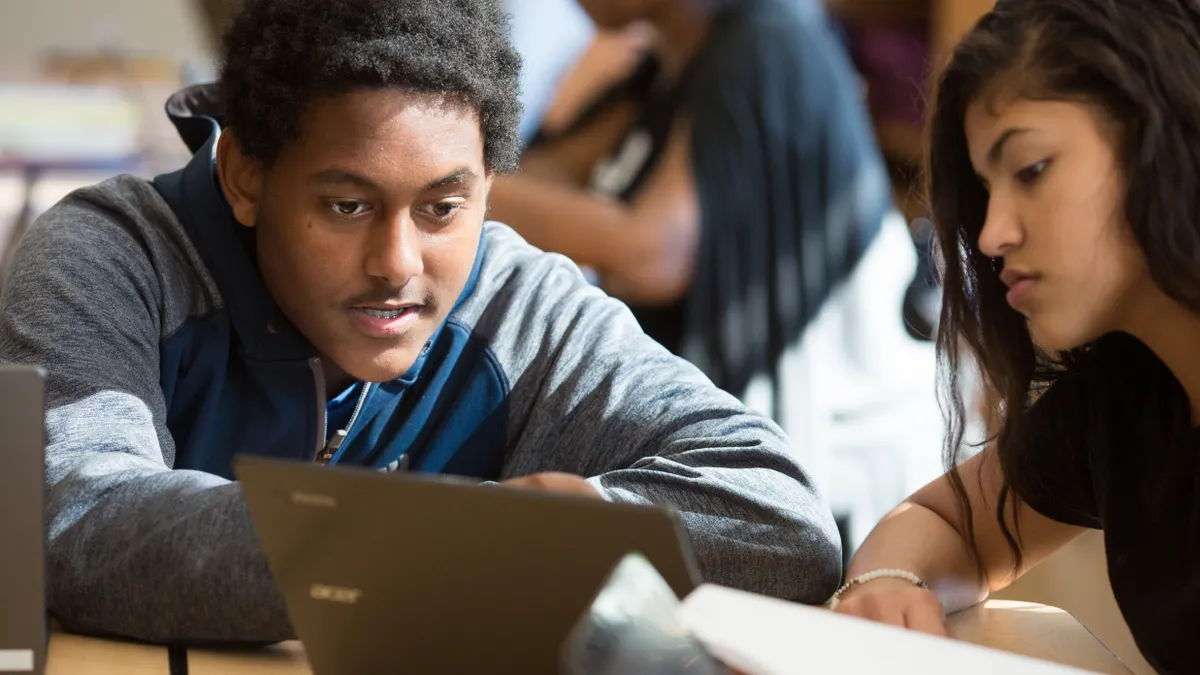The rapid growth and use of technology has created an ever-changing backdrop for teaching, learning, and understanding the world. The constant innovation makes it difficult to harness emerging technologies to distinguish between accurate and faulty information. In just three decades, the internet has introduced widespread AI use and social media platforms that now reach over 5 billion people globally.
Generative AI (GenAI) platforms are entering classrooms, social life, and workplaces at a lightning pace. The internet has become the dominant information source, yet people rarely evaluate websites and social media platforms based on source credibility. Instead, research shows that people often make judgments based on a website’s appearance, how well the information aligns with their preexisting beliefs, or ease of navigation. While this emerging technology has its benefits, it must be properly channeled. AI tools can generate artificial data that is not always clearly labeled, and this data can train other AI systems, quickly spreading misinformation. This is especially concerning in an age where more than half of teenagers get their news from social media platforms.
People are generally unprepared to evaluate the credibility of online sources, leading to misinformation. While some states have passed media literacy laws, they often lack rigorous implementation due to insufficient funding, limited professional development for teachers, and a lack of direction based on best practices.
Another challenge for schools is the lack of understanding learner variability, which ensures all students are included in learning design. Learner variability recognizes that each student has strengths and challenges that vary depending on the learning context. It applies to both students who struggle and those who excel. Why? Because of the natural differences among individuals in school and beyond.
One effective solution to the challenge of evaluating online information is lateral reading, a research-based strategy. Lateral reading involves “leaving an unfamiliar website to search for information about a source’s credibility via additional sources.” A study by McGrew and Wineberg found that lateral reading, along with “taking bearing,” enables people to “quickly and accurately discern the trustworthiness of information.” In a comparison study between Stanford students, historians, and professional fact-checkers, only the fact-checkers consistently determined the truth quickly and accurately. The researchers noted that lateral reading does not align with the Common Core State Standards’ close reading strategy, which instructs students to “read and reread deliberately” to discover meaning. While close reading is essential for literacy, it is not efficient or effective in evaluating digital and non-fiction resources when the source's credibility is unknown.
Digital Promise’s Learner Variability Navigator (LVN) offers teachers research-based strategies that provide an essential first step in building lateral reading skills. These strategies include background knowledge, vocabulary, attention, processing, critical thinking, and cognitive flexibility. For students with learning disabilities, assistive technology and other supports are key to developing these skills. Research-based strategies like these are essential for preparing students for the workforce of today and tomorrow. In his research, Wineburg found that even brief instruction in lateral reading can be effective. His team discovered that high school students who received training in lateral reading were twice as likely to improve their ability to evaluate online information and identify unreliable content compared with peers who did not receive such instruction.
Practical classroom examples show the real-world application of lateral reading. Edutopia reports that William Colglazier, a teacher in San Mateo, California, teaches students lateral reading and “click restraint” – encouraging learners “not to click on the first result in a search and assume that it’s trustworthy.” Similarly, Adrienne Toomey at Neuqua Valley High School in Illinois had students assess a TikTok video’s credibility in the context of genetic modification, asking them to evaluate the creator’s reliability: “Who is this person, really? Is what they’re saying trustworthy?” Unsurprisingly, students found the exercise engaging. However, many schools’ media literacy programs fail to integrate a framework for AI literacy, which advocates evaluating AI as part of literacy education. Schools also often fall short of research-based practices that help students discern fact from fiction. Without strategies like lateral reading, students may struggle to effectively navigate misinformation.
More research is needed on classroom strategies to improve critical thinking of digital information. Lateral reading should be part of every media literacy program, and fact-checking skills should be integrated across subjects. Schools should utilize resources like the Digital Promise AI Literacy Framework, which emphasizes justice, human judgment, and includes practices, to address misinformation. Finally, understanding and addressing learner variability is crucial to ensuring all students have the opportunity to develop lateral reading skills and guard against misinformation.









